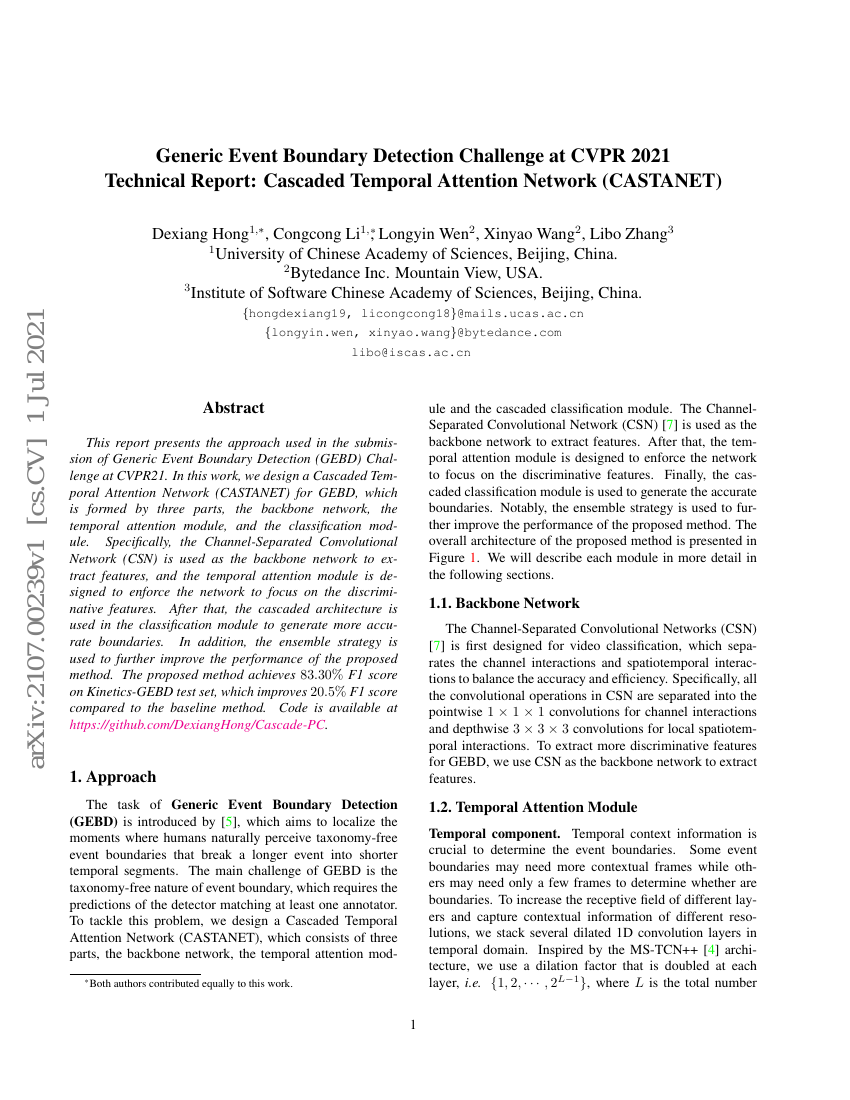Command Palette
Search for a command to run...
Generic Event Boundary Detection Challenge at CVPR 2021 Technical Report: Cascaded Temporal Attention Network (CASTANET)
Hong Dexiang ; Li Congcong ; Wen Longyin ; Wang Xinyao ; Zhang Libo

Abstract
This report presents the approach used in the submission of Generic EventBoundary Detection (GEBD) Challenge at CVPR21. In this work, we design aCascaded Temporal Attention Network (CASTANET) for GEBD, which is formed bythree parts, the backbone network, the temporal attention module, and theclassification module. Specifically, the Channel-Separated ConvolutionalNetwork (CSN) is used as the backbone network to extract features, and thetemporal attention module is designed to enforce the network to focus on thediscriminative features. After that, the cascaded architecture is used in theclassification module to generate more accurate boundaries. In addition, theensemble strategy is used to further improve the performance of the proposedmethod. The proposed method achieves 83.30% F1 score on Kinetics-GEBD test set,which improves 20.5% F1 score compared to the baseline method. Code isavailable at https://github.com/DexiangHong/Cascade-PC.
Code Repositories
Benchmarks
| Benchmark | Methodology | Metrics |
|---|---|---|
| boundary-detection-on-kinetics-400 | CASTANET+ Ensemble | Pairwise F1: 0.814 Precision: 82.8 Recall: 83.8 |
Build AI with AI
From idea to launch — accelerate your AI development with free AI co-coding, out-of-the-box environment and best price of GPUs.